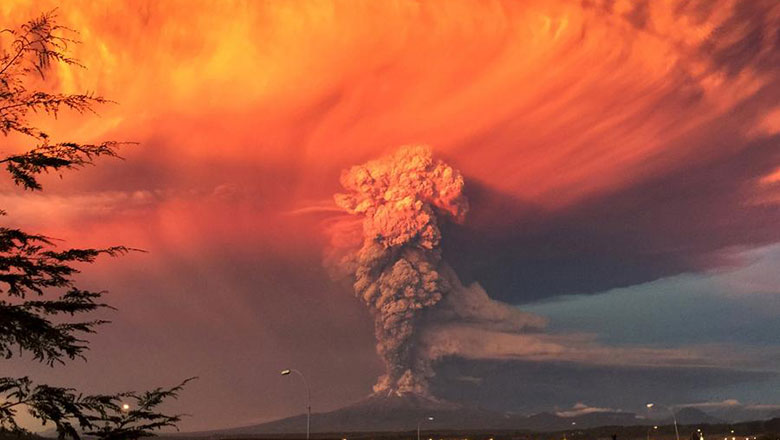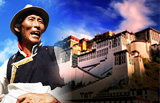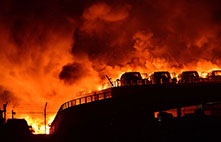School for mountaineering builds home-grown expedition expertise
Updated: 2015-12-29 08:15
By Palden Nyima and Da Qiong in Lhasa(China Daily)
|
||||||||
 |
|
Climbers from the Tibet Mountaineering School arrive at a height of 7,799 meters while climbing Qomolangma, known as Mount Everest in the West, in 2008 in the Tibet autonomous region. CHINA DAILY |
Company founder promotes region as center of Himalayan culture and outdoor sports paradise
Surrounded by snow-capped mountains and glaciers, the Tibetan Plateau is one of the world's finest destinations for climbers and explorers seeking challenging peaks and rarefied vistas.
Yet for decades, most serious mountaineers looked outside of China for the guides, resources and services needed to climb its lofty peaks.
Tibetan alpinist Nyima Tsering sought to change that, step by step, expedition by expedition.
Born in the Tibet autonomous region's eastern Qamdo prefecture, Nyima has spent the past 15 years generating local mountaineering expertise, building Tibet into a center of Himalayan mountaineering culture and promoting the area as a paradise for outdoor sports.
Nyima, 47, has three times climbed to the summit of Qomolangma, known as Mount Everest in the West. He made a 8,500-meter ascent in 2000, and was the third of five torchbearers on the mountain in celebration of China's 2008 Olympic Games.
The founder of Tibet's first mountaineering school, Nyima also was the first to operate a mountaineering expedition company, the Tibet Himalaya Expedition Co.
The Tibet Mountaineering School, which he established in 1999, has trained more than 200 professional mountaineering staff, including guides, translators and coaches. It is one of only two mountaineering schools in the world, the other being the French National Skiing and Mountain Guide School in Chamonix, France.
The two schools have signed long-term cooperative contracts. "In the past 15 years, the French school has sent their coaches to our school every year, and we have sent our students to their school every year," Nyima said.
The French school shares its climbing techniques and makes a "great contribution to the success of mountaineering in Tibet", he said.
Tibet's trained climbers are mostly from the counties of Dingri, Gyirong, Nyanang and Dingye, as these are rich in tall, snow-packed mountains. The climbers and mountain guides mostly work on Qomolangma and in the central areas of the Himalayas.
Before the school's founding, mountaineering services in China were mainly provided by foreigners.
"I can say the school filled a gap of mountaineering in China as such services were mainly carried out by Nepalis and Westerners decades ago," Nyima said.
Located in Lhasa, the capital of the Tibet autonomous region, the school provides cultural courses in the morning - such as languages, history, filming and cooking - and physical classes in the afternoon. And it's all free to students. Nyima's two mountaineering expedition companies pay all the expenses, including accommodations and fees, with the help of a 700 yuan ($110) monthly subsidy for each student from the regional educational department.
In addition to assuming the school's cost, the two companies manage the school, help graduates gain field experience, and provide them with jobs.
"The two commercial expedition companies Nyima Tsering founded have helped maintain his mountaineering school as a sustainable project," said Tsering Samdrup, 33, the general manager of Tibet Himalaya Expedition.
The school currently has 40 students, mostly men, from the four Tibetan counties with the five highest mountains.
"Not only does Tibet have its own professional team for climbing, the team has helped many amateurs fulfill their climbing dreams," Tsering said.
Asked about the origins of the school, Nyima said he wanted local people to be skilled at all sorts of mountaineering jobs, not just transportation.
"I was disappointed by the reality of Tibet not having highly skilled professionals to carry out mountaineering work a decade ago," Nyima said.
Tibet has many advantages in developing its mountaineering industry. It has five mountains higher than 8,000 meters, more than 70 mountains higher than 7,000 meters, and more than 1,000 mountains higher than 6,000 meters.
"Tibet has rich resources for mountaineering, and Tibetans near the mountains are born to adapt to the high-altitude environment," said Zhang Mingxing, 50, secretary of the China Tibet Mountaineering Association.
Zhang said the region is building a mountaineering industry and developing its plateau sports industry.
"Tibet has huge potential to create harmonious development between tourism, economics, the service sector and mountaineering," Zhang said.
- US-led air strikes kill IS leaders linked to Paris attacks
- DPRK senior party official Kim Yang Gon killed in car accident
- Former Israeli PM Olmert's jail term cut, cleared of main charge
- Japan, S. Korea reach deal on 'comfort women'
- More than 70 killed in Nigeria bombings, suicide attacks
- Argentina issues orange alert for heat wave

 Yearender: Chinese athletes of year
Yearender: Chinese athletes of year
 Yearender: Key words from popular China news stories in 2015
Yearender: Key words from popular China news stories in 2015
 Hangzhou shuts steel plant to improve air quality
Hangzhou shuts steel plant to improve air quality
 China's longest tunnel under lake open to traffic
China's longest tunnel under lake open to traffic
 Top 10 policy changes in China in 2015
Top 10 policy changes in China in 2015
 Yearender 2015: Natural disasters
Yearender 2015: Natural disasters
 The world in photos: Dec 21 - 27
The world in photos: Dec 21 - 27
 Yearender: Film critics' top 10 Chinese films of 2015
Yearender: Film critics' top 10 Chinese films of 2015
Most Viewed
Editor's Picks

|

|

|

|

|

|
Today's Top News
Shooting rampage at US social services agency leaves 14 dead
Chinese bargain hunters are changing the retail game
Chinese president arrives in Turkey for G20 summit
Islamic State claims responsibility for Paris attacks
Obama, Netanyahu at White House seek to mend US-Israel ties
China, not Canada, is top US trade partner
Tu first Chinese to win Nobel Prize in Medicine
Huntsman says Sino-US relationship needs common goals
US Weekly

|

|








